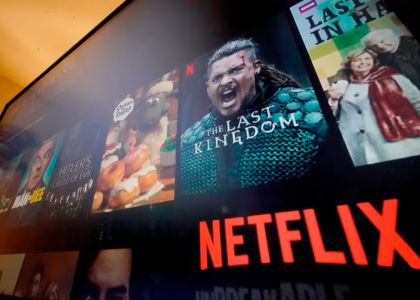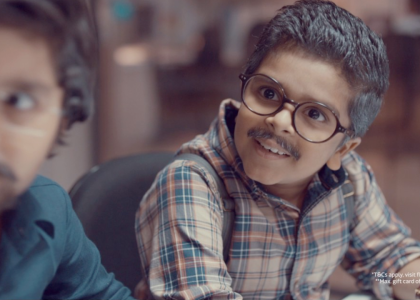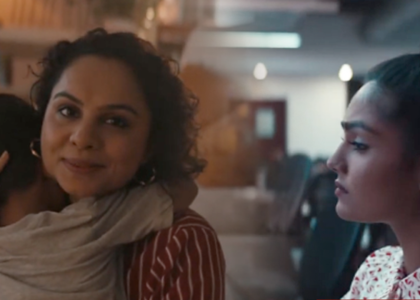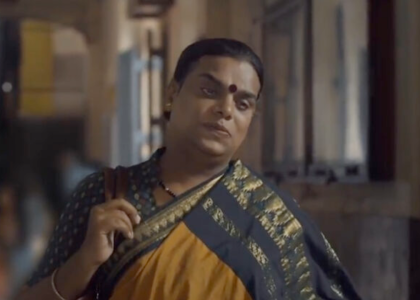Executive Summary
In one of India’s most memorable Diwali campaigns, Cadbury Dairy Milk, a brand owned by Mondelēz India, executed a hyper-personalized and AI-driven communication strategy titled “Not Just a Cadbury Ad.” This initiative was not a conventional brand campaign — it was a unique, large-scale, data-enabled, empathy-driven digital experiment that transformed Cadbury’s role from a chocolate marketer to a community enabler during a national crisis.
As the COVID-19 pandemic disrupted India’s economic and social fabric in 2020–2021, Cadbury sought to support one of the hardest-hit segments — local small businesses and kirana stores — during the festive season of Diwali. These businesses often survive on foot traffic and local patronage, both of which were decimated during lockdowns.
Cadbury used AI-generated video customization, geo-location data, dynamic scripting, and programmatic delivery to create over 1800 personalized versions of its Diwali TV ad, each embedded with localized retail names and shops from the viewer’s neighborhood. Through a seamless UI, users could generate a Cadbury ad featuring their local shop, download it, and share it. In effect, Cadbury was giving its media space to India’s small retailers.
The campaign was not only emotionally resonant but also a technological first in Indian advertising — combining deep personalization with scalable storytelling and social sharing mechanics.
This case study unpacks the full 360-degree view of the campaign, including:
- Strategic intent and brand objectives
- Technology stack and AI methodology
- Campaign rollout phases
- Engagement, media, and business results
- Retailer sentiment and consumer feedback
- Competitive and category benchmarks
- Future-ready brand lessons
Brand Context: Cadbury Dairy Milk’s Emotional Legacy
Cadbury Dairy Milk has been one of India’s most iconic and trusted brands for over three decades. From the early days of the “Kuch Meetha Ho Jaaye” campaign to the recent purpose-driven positioning around kindness, generosity, and shared celebration, the brand has consistently used emotional storytelling to reinforce its place in Indian culture.
Key Historical Positioning Shifts:
- 1994–2005: Youthful indulgence (“Real Taste of Life”)
- 2006–2012: Celebration of family and festivals
- 2013 onwards: Emotional generosity (“Kuch Achha Ho Jaaye”)
Cadbury’s advertising has often centered on real human moments, whether it’s a young girl dancing on a cricket field, a father sharing a chocolate with his daughter after work, or siblings bonding over Rakhi. What made the 2020 Diwali campaign unique was that the emotion wasn’t centered on product consumption, but on enabling others’ well-being.
COVID-19 Disruption: The Communication Imperative
India in 2020–2021 was grappling with multiple COVID-19 waves. Amid lockdowns, supply chain disruptions, and reduced footfall in physical markets, small businesses and neighborhood shops — the backbone of India’s informal economy — were severely impacted.
Challenges for Retailers:
- Drastic reduction in local footfall
- Dependence on word-of-mouth, now broken
- Lack of online presence or digital marketing support
- Emotional disconnection during festivals
Challenges for Brands:
- Risk of seeming opportunistic during a pandemic
- Consumers were seeking meaning, not marketing
- Brands needed to earn attention through action, not just ads
In this context, Cadbury’s team, in partnership with Ogilvy India and Wavemaker, developed a counterintuitive approach: let’s not advertise Cadbury — let’s use our ad space to promote others.
The Core Idea: An Ad That Changes Based on Where You Watch It
A. Creative Insight:
People feel emotionally invested in “their” local shops, many of which were struggling to survive. By integrating these stores into the Diwali narrative, Cadbury could make every ad feel personally relevant and socially responsible.
B. Campaign Title:
“Not Just a Cadbury Ad” — it was a signal that the ad would go beyond chocolate.
C. Key Mechanics:
- Built a machine-learning engine that dynamically inserted retailer names into ad visuals and VO (voice-over)
- Based on the viewer’s geolocation (PIN code), local shops were populated into the ad scene
- Generated over 1800+ versions automatically
- Created a microsite where users could enter a PIN code and generate a version of the ad personalized to their neighborhood
The Technology Behind the Magic
This was not a plug-and-play personalization engine. It required a complex tech stack, real-time data parsing, and precision video rendering. Here’s a breakdown:
A. Data Collection
- Cadbury used a combination of publicly available data and verified retailer lists across 260+ Indian PIN codes
- Each list included: shop name, category (grocery, textile, footwear), and location metadata
B. AI-Powered Video Customization
- Used deep learning-based facial/text animation tools to insert dynamic elements into a fixed master ad
- Visuals like signboards, street banners, and nameplates were digitally altered per user location
- Text-to-speech AI re-rendered the audio narration with correct pronunciations of shop names
C. Cloud Rendering Pipeline
- Video outputs were processed and cached on AWS
- Front-end allowed for real-time generation within 10–15 seconds per user
- System designed to support 5000+ concurrent requests
D. User Experience Design
- Users could:
- Visit the microsite
- Enter their PIN code
- Download a video where a Cadbury family shopped from their local shops
- Share it on WhatsApp, Facebook, Instagram, or embed it in Google Maps
Multi-Channel Rollout
| Channel | Description |
| TV | Aired in 11 major languages across GECs, but served with region-specific versions in urban markets |
| YouTube Pre-roll | Targeted via location filter, embedded with hyper-personal visuals |
| OTT Platforms | Ran on Hotstar, Zee5, SonyLIV with dynamic insertion |
| Instagram Reels | Partnered with local influencers to demo personalized ads |
| Microsite Campaign | Over 2M visits in the first 10 days |
| PR + Earned Media | Widely covered in Economic Times, CNBC, Brand Equity, and WARC |
Performance & Impact
Quantitative Results:
- Reach: Over 20 million unique viewers
- Personalized Ads Created: 2.1 million+ (user-generated)
- Shop Participations: Over 1800 listed in ads
- Engagement Rate: 3x industry benchmark on YouTube
- PR Value Generated: Over ₹8 Cr in unpaid media
- Sentiment Analysis: 91% positivity rate on campaign hashtags
- Sales Uplift: Dairy Milk saw a 12% increase in festive sales (source: Nielsen retail audit, Q4 2020)
Qualitative Outcomes:
- Shop owners reported increased visibility and traffic
- Social media flooded with consumers tagging “their Cadbury ad”
- Industry recognized Cadbury for innovation + empathy, not just marketing
Testimonials & Anecdotal Feedback
A. Retailers:
“Customers came in saying they saw our store in a Cadbury ad! It felt like we mattered again.”— Local grocer, Pune
“My shop never had online ads. Now my daughter plays our Cadbury ad on her phone!”— Tailor, Kolkata
B. Consumers:
“For the first time, an ad felt like it was made for my gali. This was emotional.”— Twitter user from Bengaluru
“We didn’t just buy chocolate. We felt like we supported our neighborhood.”— Facebook comment from Delhi
C. Industry:
“Cadbury did what the government couldn’t — gave visibility to kirana stores at scale.”— Adweek India
Strategic Learnings & Best Practices
| Strategy Area | Action | Best Practice |
| Brand Purpose | Gave media space to others | Purpose is not declared — it is demonstrated |
| Tech + Storytelling | AI-enabled video customization | Emotional narratives can be scaled with tech |
| Geo-Targeting | Served hyperlocal stories at scale | Location = the new personalization |
| Empowerment Model | Made consumers feel part of something meaningful | Co-creation > passive consumption |
| Retail Inclusion | Featured local businesses in ad content | Inclusion builds brand equity & loyalty |
Global Benchmarks & Comparative Campaigns
| Brand | Campaign | Comparison |
| Coca-Cola | “Share a Coke” | Used personalized labels, but not dynamic media |
| Nike | “You Can’t Stop Us” | Used powerful editing, but not hyperlocal delivery |
| McDonald’s | Geo-targeted offers | Offered pricing relevance, not emotional storytelling |
| Spotify | “Wrapped” | Data-driven but focused on individual use |
| Cadbury | “Not Just a Cadbury Ad” | Combined purpose, data, and scale in a community-led framework |
Cadbury’s campaign arguably stands out as the most purpose-driven application of AI in Indian advertising history.
Future Outlook: The Road Ahead
Post campaign success, Cadbury’s team has indicated plans to:
- Use dynamic video tech for other festivals (Rakhi, Eid, Pongal)
- Integrate real-time sales data into ad creative (e.g., highlighting stores with stock offers)
- Enable shopkeepers to self-upload photos or logos into future ad engines
- Build an always-on hyperlocal media framework across Mondelez brands (Bournvita, Perk, 5 Star)
This format can also be monetized by partnering with retail POS players, creating mini-campaigns on demand.
Sources & References
- Ogilvy India press kit (2021)
- Economic Times: Campaign Analysis – October 2020
- AdAge & The Drum: Global Advertising Innovation Features
- Campaign India: Awards Recap
- CNBC TV18: Retailer Interviews Post-Campaign
- WARC Effectiveness Awards Archive
- Mondelēz Annual Reports & Investor Presentations






